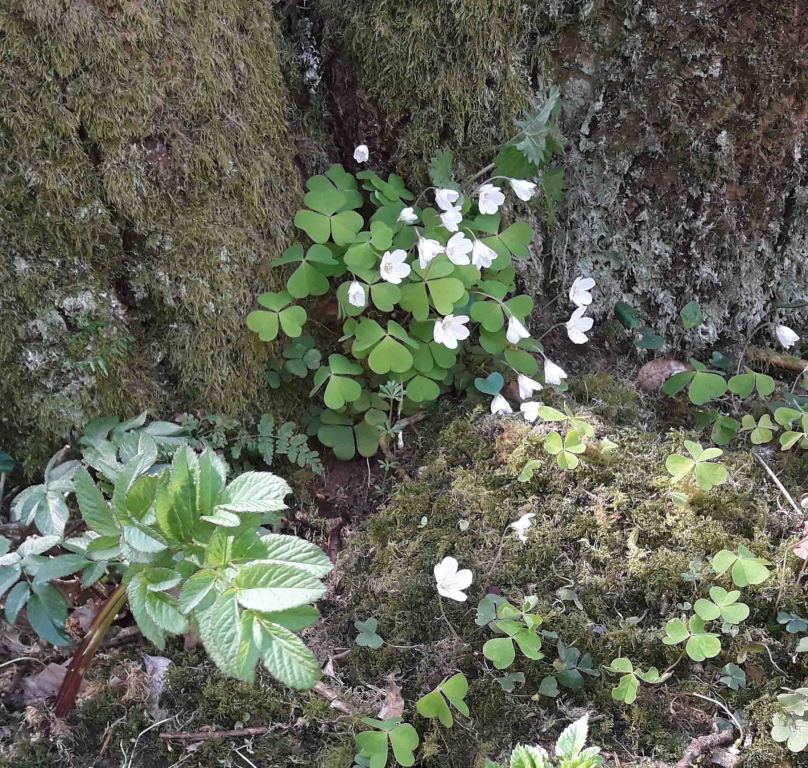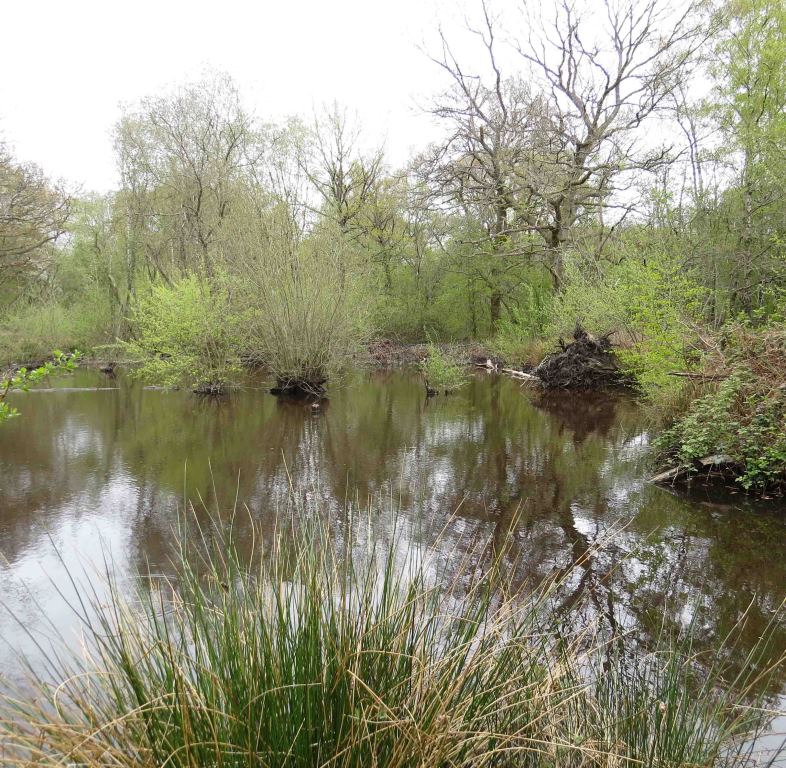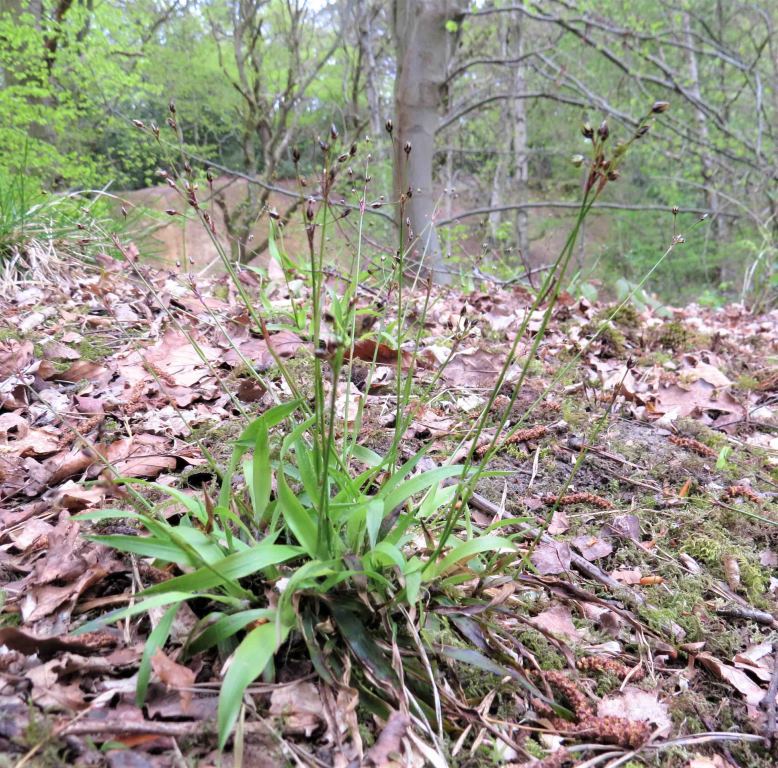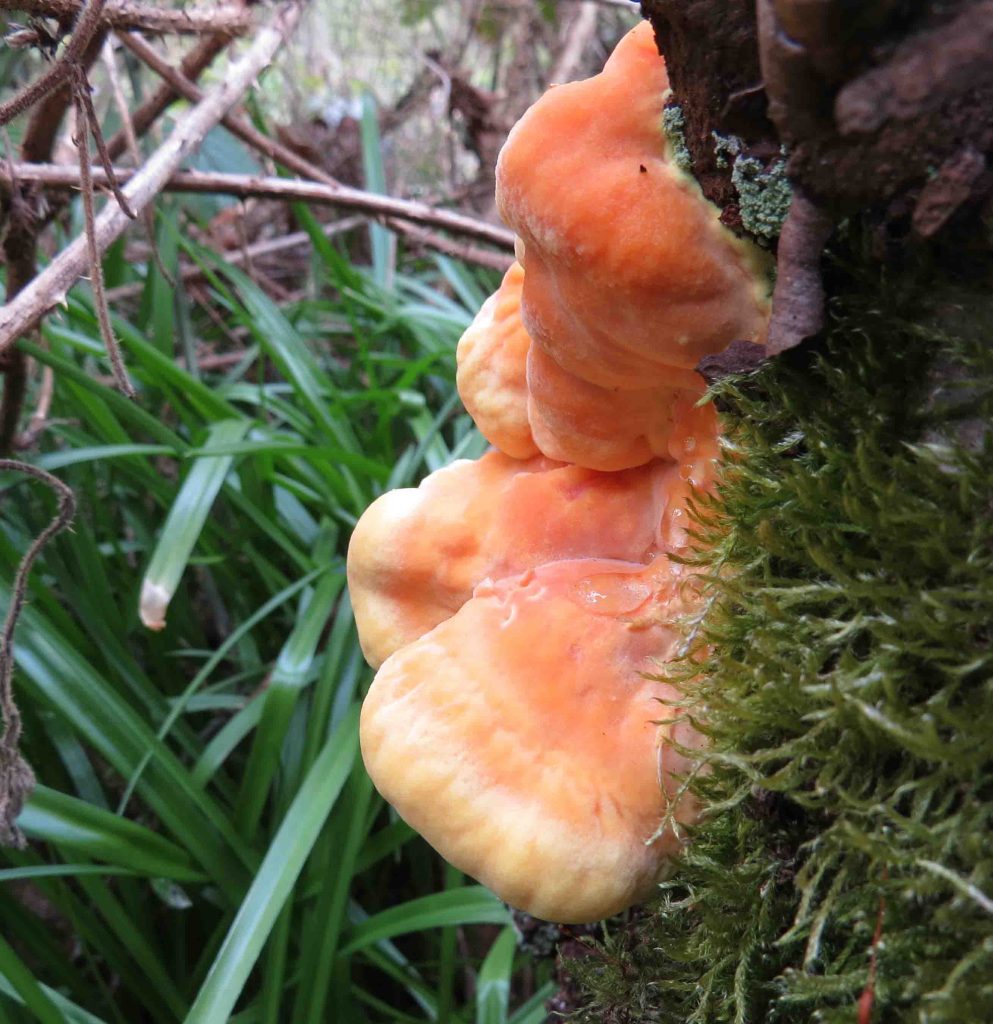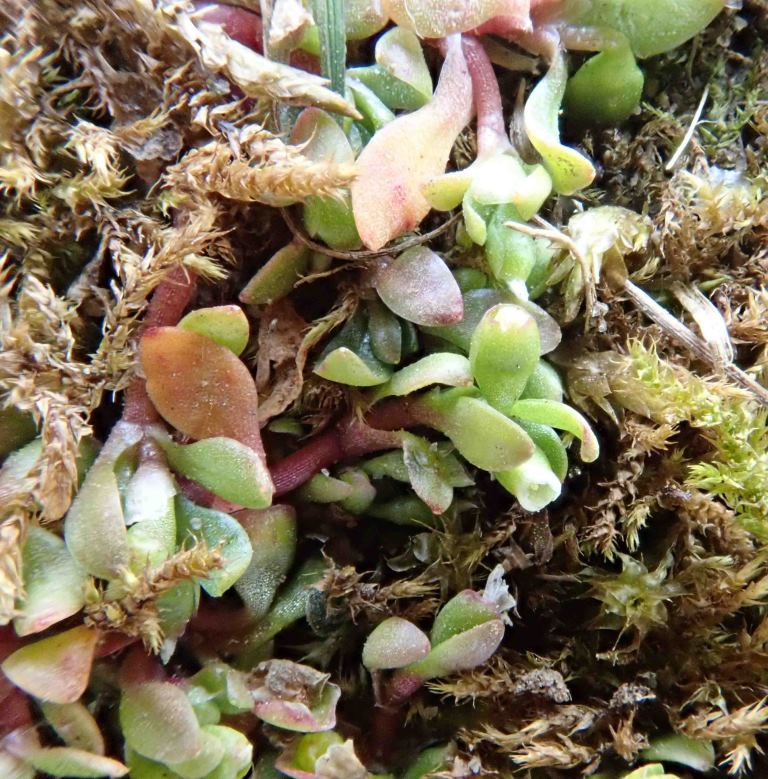Sally Rankin led two walks, one in the morning and one in the afternoon, on the sunny day of Saturday 24 April, starting from the Green in Nettlebed to look at the marshland, ponds, heathland and geological sites on the Common. In addition, three more members joined Sally on the pre-walk earlier in the week. Sally gave a brief history of the Common which is part of the Nettlebed Estate and belongs to the Fleming family. She pointed out that the undulating landscape of mixed woodland, heathland and marshland derives from the excavations made by brick-makers, the only visual sign now being the single remaining kiln in the centre of Nettlebed.
The group set off down a lane fringed with mainly wild flowers including Cowslip and the first of a number of patches of Wood-sorrel seen during the walk. There were numerous ponds to be seen including one formerly used as the drinking supply for Nettlebed village. Sally also pointed out at least one sink hole in the area. As the group walked through the area a variety of birdsong was heard including Robin, Wren, Chiffchaff, Great Tit, Blackbird and Blackcap. A Stock Dove perched on a telegraph wire. (Other birds heard or seen on the pre-walk were Treecreeper, Nuthatch, Song Thrush, Mallard, Mistle Thrush, Marsh Tit, Pied Wagtail, Blue Tit, Dunnock, Coal Tit, Willow Warbler, Buzzard, Red Kite, Goldcrest, Goldfinch and Lesser Spotted Woodpecker.) On a bank at the end of the lane a remarkable number of Colt’s-foot were growing. Other plants seen around here were Wood Sedge, Greater Stitchwort, Ground Ivy and the variegated form of Yellow Archangel. Orange-tip, Brimstone and Speckled Wood butterflies were spotted and the call of a Green Woodpecker was heard in the distance.
Sally led the group to a small area of the wood which had survived as heathland covered with Heather as it was formerly the site of a Scout Camp. Birch and Rowan seedlings were flourishing. The walk continued to Windmill Hill, the highest point in the district but no longer the site of a mill, and the group then entered an area of marshland scattered with small trees and pools. It would have been too wet to walk through had it not been for the recent dry spell. Sally pointed out the leaves of Lesser Spearwort, not yet in flower. At one of the larger pools the group observed a bird which was identified as a female Chaffinch behaving in ‘flycatcher’ fashion. Returning to dry woodland, a pair of noisy Jays flew ahead and a few plants of Hard Fern were observed. The group walked past an active Badger sett and then spent several minutes watching a Great Spotted Woodpecker foraging among the trees. Sally explained that the Thames formerly ran through the area with large numbers of rounded stones as the evidence for this. The final part of the walk led through another marshy area where Sally drew attention to Sphagnum Moss, a rarity in Oxfordshire. A pair of Mandarin Ducks was spotted on one of the larger pools and a male Siskin flew down to drink at the edge. Blinks was found on the edge of the recreation ground although not everyone was convinced that the identification was correct. Hopefully someone will get back to check it when it is in flower.
Report by Fiona Cummins
Pictures by Fiona Brown, Fiona Cummins and Sarah White

